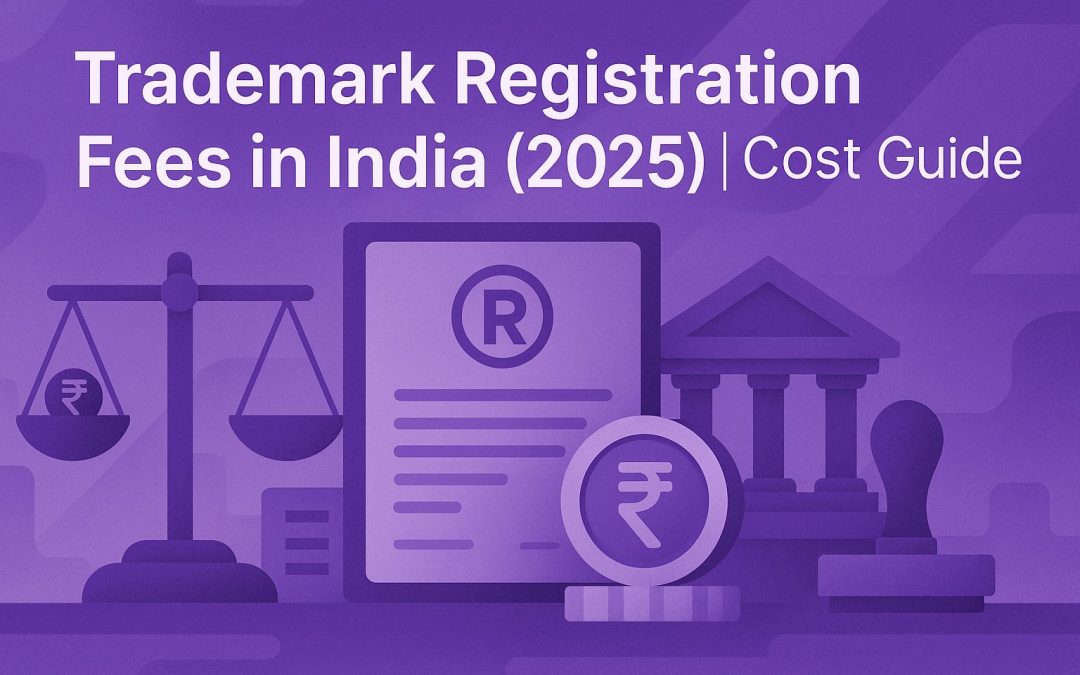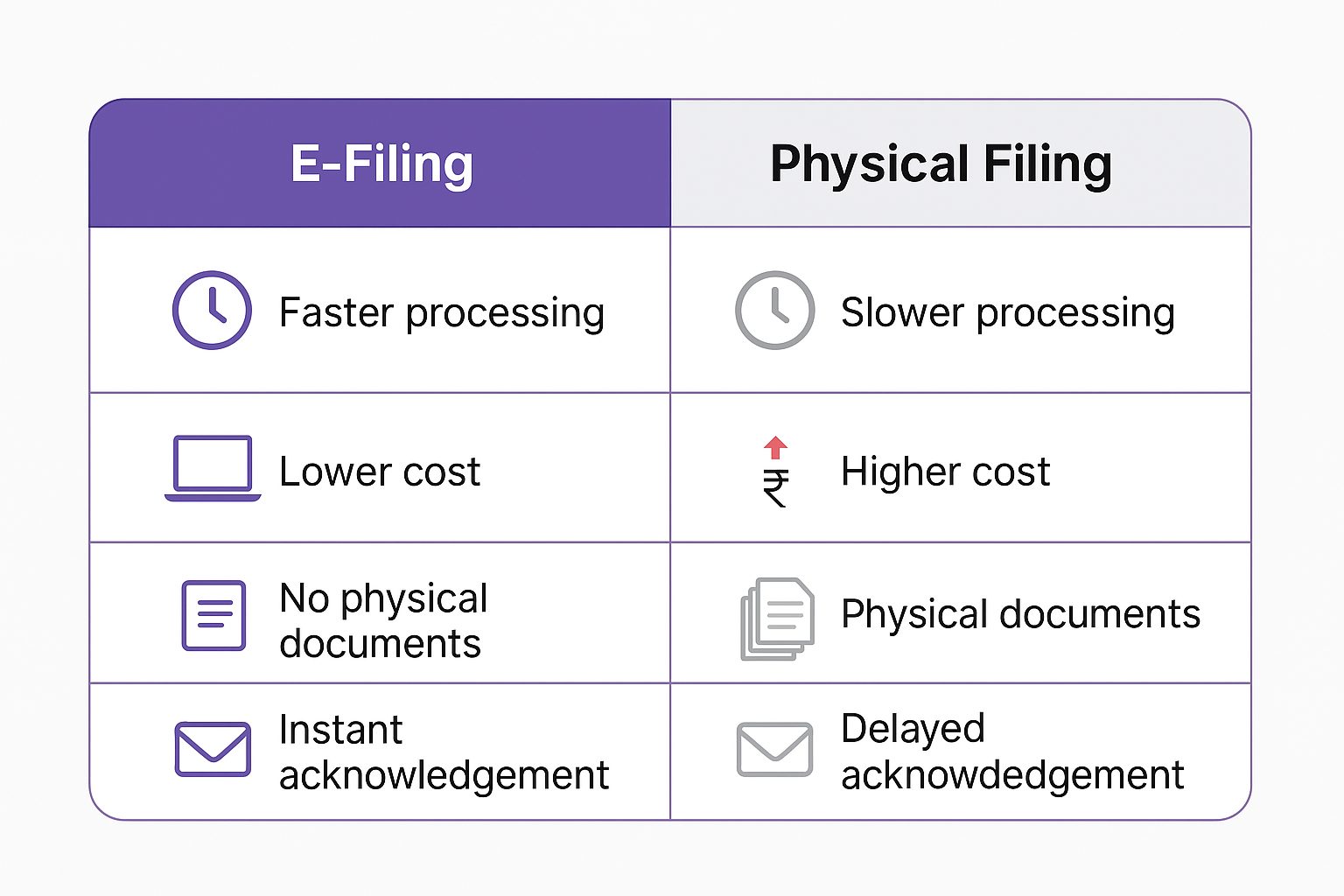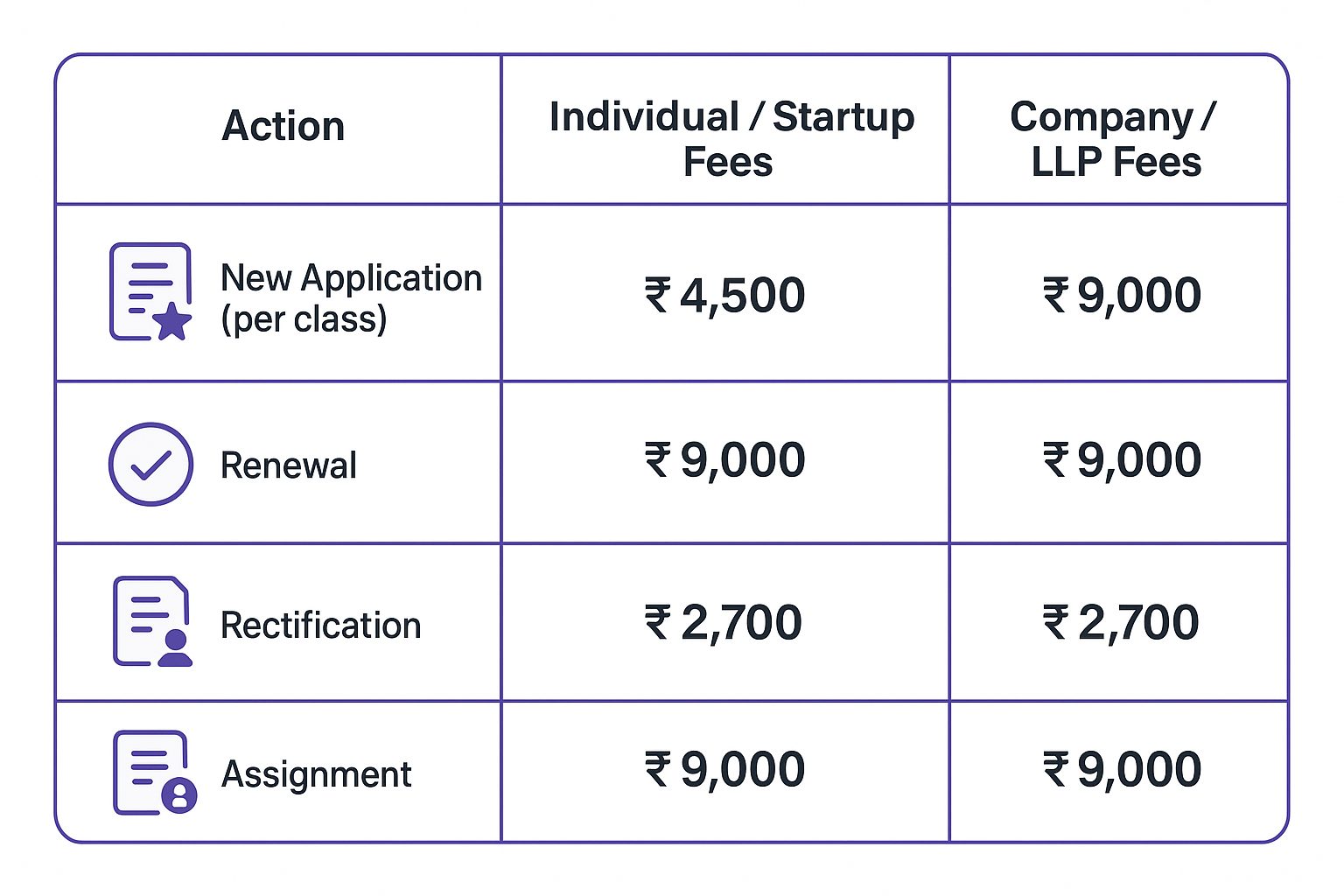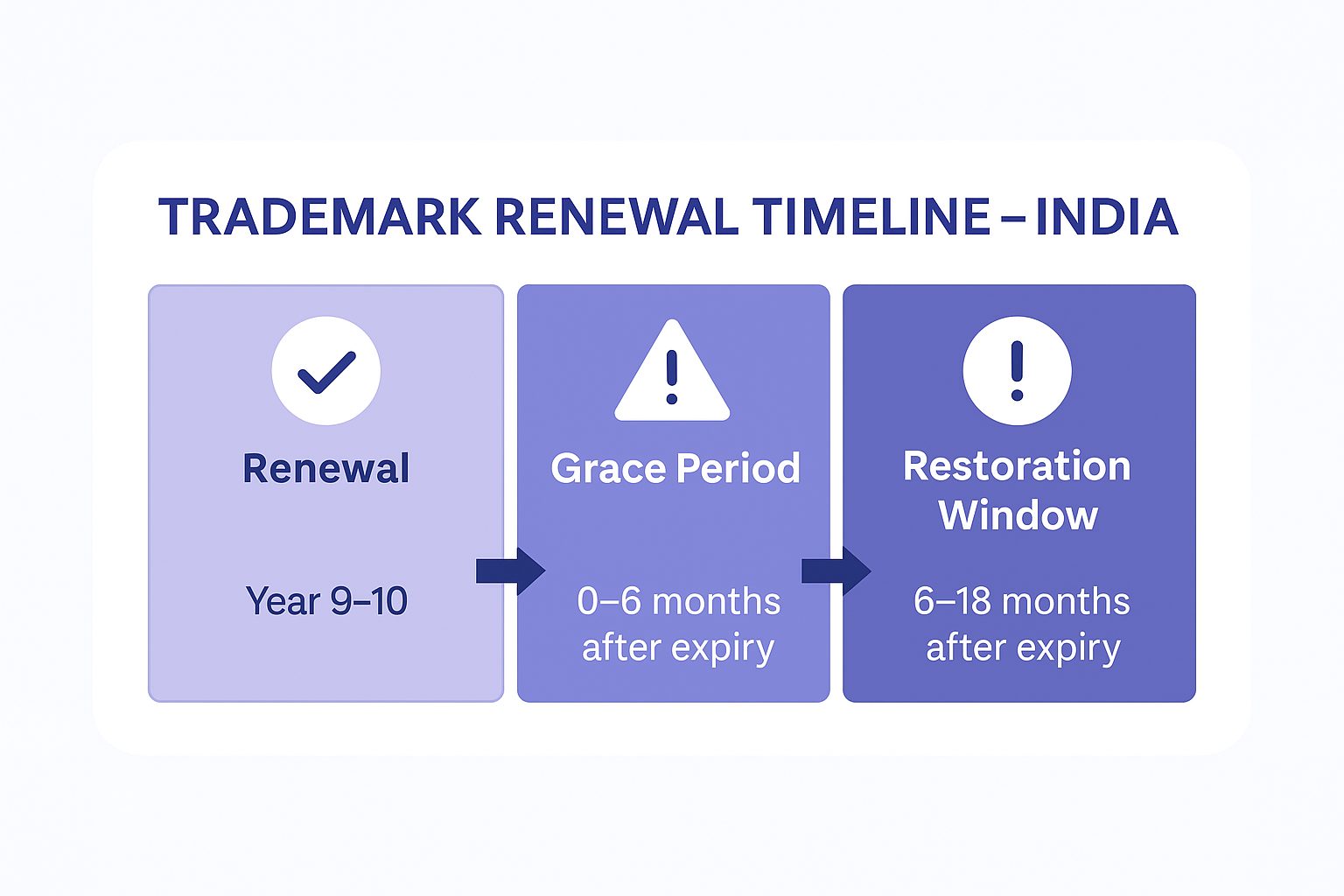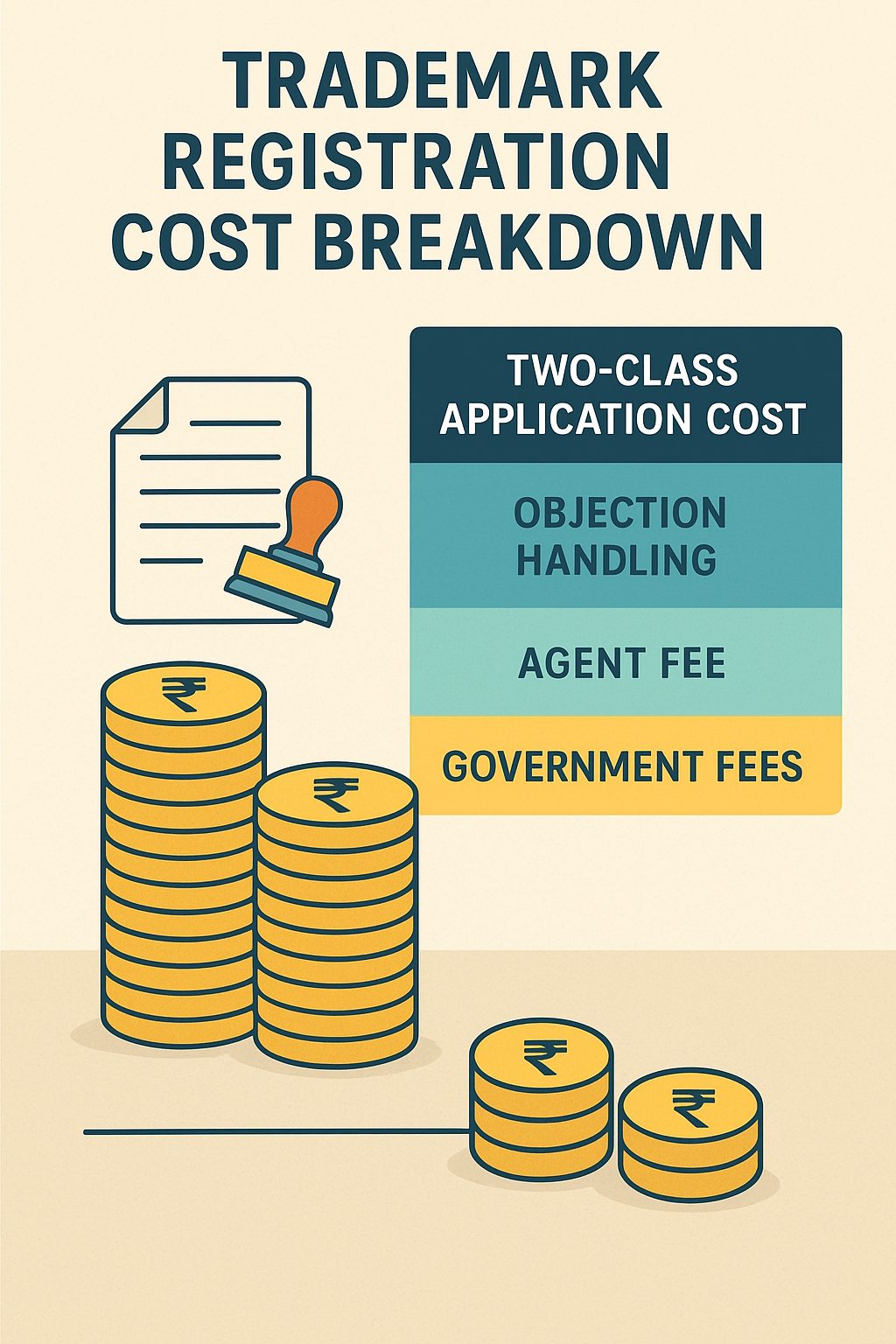Table of Contents
Trademarks aren’t just paperwork—they’re protection. Your name, your logo, your tagline—once they’re out in the world, they’re exposed. And if you don’t register them, someone else can.
But before you begin the process, let’s talk numbers.
Trademark registration in India comes with a fee structure that isn’t always straightforward. It changes depending on a few things: who’s applying, how the application is filed, and how many categories (or classes) your brand covers. There are also costs involved in renewals, changes in ownership, and even corrections.
Knowing the fee breakdown early helps. It lets you budget better, file smarter, and avoid last-minute panic when you’re halfway through the process. That’s what this guide is here for.
Quick snapshot of fee difference: MSME vs regular entity
Let’s talk numbers.
As of 2025, filing a trademark costs:
- ₹4,500 per class if you’re registered as an MSME or DPIIT startup
- ₹9,000 per class for everyone else
This applies only to online filings. Physical submissions cost more and take longer.
To get the discount, your Udyam or Startup certificate must be in order before you file.
Set the tone: clarity + cost-awareness
This guide isn’t for lawyers. It’s for business owners who want straight answers.
We’ll break down the real costs—filing, objections, renewals—and show you where businesses overspend.
If you’re protecting your brand in 2025, start with this: know your costs, claim your rebates, and don’t file blind.
Who Gets the MSME Discount?
Not everyone qualifies for the lower ₹4,500 filing fee. To get it, your business needs official recognition as either:
- a Micro, Small, or Medium Enterprise (MSME) under the Udyam system, or
- a startup registered with DPIIT (Department for Promotion of Industry and Internal Trade)
This isn’t automatic. The trademark office won’t guess. You have to upload the right certificate while filing your application.
MSME (Udyam) Eligibility
If your business is listed on the Udyam portal with a valid Udyam Registration Number (URN), you’re covered. You’ll need to download your certificate and attach it when filing the trademark application online.
Pro tip: Make sure the applicant name on the Udyam certificate matches the name used in the trademark form. Even a mismatch in spelling can delay or void the rebate.
Startup (DPIIT) Eligibility
If you’re a recognised startup with a valid DPIIT certificate, you also qualify for the rebate. You can get the certificate via the Startup India portal. The same rule applies: your trademark application must match the name and entity on that certificate.
What if you’re not registered?
No Udyam or DPIIT certificate = no rebate.
You’ll be charged the standard ₹9,000 per class filing fee.
But here’s the thing—Udyam registration is free, online, and takes 10 minutes. DPIIT recognition isn’t much harder if you’re eligible. If you’re planning to file, get the paperwork done first and cut your cost in half.
Why E-Filing Beats Physical Filing
Most people today file their trademark applications online, and there’s a good reason for that. Actually, several. For starters, the fees are lower if you file electronically. Not a huge drop—but enough to matter, especially if you’re applying under more than one class.
It also saves you time. No printing, no courier service, no trips to the trademark office. You log in, upload your documents, sign them digitally, and it’s done. You get an acknowledgement right away. If anything needs fixing, you’ll know sooner.
Here’s how the two options compare:
| What You’re Paying For | E-Filing | Physical Filing |
| Filing Fee (Startup/Individual) | ₹4,500 | ₹5,000 |
| Filing Fee (Other Applicants) | ₹9,000 | ₹10,000 |
| Time to Acknowledgement | Instant | A few days, sometimes more |
| Tracking Application | Easy — through online portal | Manual — follow up needed |
| Submitting Documents | Upload + Digital Signature | Paper forms + physical copy |
| Overall Turnaround Time | Faster | Slower |
Unless you’re dealing with a special case or legacy system, there’s no real upside to physical filing anymore. The online system works. It’s not perfect—but it’s quicker, cleaner, and usually gets the job done without fuss.
Trademark Registration Fees in India (2025)
Registering a trademark isn’t a flat-fee process. What you pay depends on two things: who you are and how you file. Individuals, startups, and small businesses pay less than larger firms. E-filing is cheaper than submitting paper forms.
| Who’s Applying | Paper Filing | E-Filing |
| Individual / Startup / Small Biz | ₹5,000 per class | ₹4,500 per class |
| Company / LLP / Others | ₹10,000 per class | ₹9,000 per class |
Important: Fees are charged per class. So if your brand falls under multiple categories (e.g., clothing and cosmetics), you’ll be paying per category. The fee is non-refundable, even if your application is opposed or rejected. Always double-check the IP India website before payment.
Rectification & Opposition Fees
After you file a trademark, objections or disputes may come up. These include challenges from other applicants or requests to fix registry errors.
| Action | Paper Filing | E-Filing |
| Notice of Opposition (per class) | ₹3,000 | ₹2,700 |
| Application to Rectify Register (per class) | ₹3,000 | ₹2,700 |
| GI Act: Invalidate Trademark / Counter Statement | ₹3,000 | ₹2,700 |
These aren’t routine filings. If you’re opposing someone or fixing legal errors, professional help is recommended. Opposition filings often lead to hearings and documentation, so plan accordingly. If you’re on the receiving end, you’ll need to respond on time—no fee, but timing is everything.
Renewal & Restoration Fees
Trademarks in India are valid for 10 years. You must renew them before expiry or pay a surcharge. If you miss both, restoration is your only option.
| Action | Paper Filing | E-Filing |
| Timely Renewal (per class) | ₹10,000 | ₹9,000 |
| Late Renewal with Surcharge (within grace) | ₹5,000 + renewal fee | ₹4,500 + renewal fee |
| Restoration + Renewal (after lapse) | ₹10,000 + renewal fee | ₹9,000 + renewal fee |
Late renewals are allowed during a 6-month grace period. After that, you’ll need to restore the trademark. It’s costly and not always guaranteed—so set reminders and renew on time.
Transfer, Assignment & Address Change Fees
If you sell your brand, restructure your business, or simply move offices, you need to update the trademark register. Here’s what that costs:
| Action | Paper Filing | E-Filing |
| Assignment / Transfer of Ownership (per trademark) | ₹10,000 | ₹9,000 |
| Approval for Alterations, Conversions, or Assignments without Goodwill | ₹3,000 | ₹2,700 |
| Business Name Change, Consent, or Time Extensions | ₹2,000 | ₹1,800 |
| Address Updates, Entry Cancellations, Dissolving Associations | ₹1,000 | ₹900 |
Each update is charged per trademark. If you’re selling a brand without the rest of the business, expect the Registrar to ask for an explanation—and sometimes a public notice. It’s best to keep all trademark records clean and current to avoid delays in renewals or ownership claims.
Search & Certificate Fees
Before filing, you may want to check if a trademark is already in use. You might also need a certificate confirming a mark’s status. Both cost money.
| Request | Paper Filing | E-Filing |
| Search + Certificate Issue | ₹10,000 | ₹9,000 |
| Expedited Search + Certificate (Rule 22(3)) | Not Available | ₹30,000 |
Expedited service is available only online and is much faster—but also more expensive. It’s useful if time is critical, such as during investor due diligence or before a launch.
Expedited Processing Fees
Need your application examined sooner? You can pay for faster processing. This is only available through the online system.
| Request Type | E-Filing Only |
| Fast-Track Examination (per class) | ₹20,000 |
This fee is in addition to your regular filing cost. So if you’re a startup filing under one class, you’ll be paying ₹4,500 + ₹20,000 = ₹24,500.
Fast-tracking moves your application ahead in the queue, usually cutting down wait times by several months. But it doesn’t bypass the legal process—objections and oppositions can still happen.
Registered User & Interlocutory Fees
If you’re letting another party use your trademark (say, under a licensing deal), or if there’s a procedural dispute mid-process, the Registrar charges separate fees.
| Action | Paper Filing | E-Filing |
| Add or Change Registered User (per trademark) | ₹5,000 | ₹4,500 |
| Review Petition / Miscellaneous Order (not covered under other forms) | ₹3,000 | ₹2,700 |
These requests are uncommon for new businesses but relevant for joint ventures, franchisees, or brands with multiple stakeholders.
Well-Known Trademark Fees
Getting your trademark recognized as “well-known” gives it extra protection—even across unrelated industries. But it’s a serious process, and not for new brands.
| Request Type | Filing Method | Fee |
| Well-Known Trademark Status (per mark) | E-Filing only | ₹1,00,000 |
You’ll need to submit evidence—market presence, recognition, media coverage, and financials. If approved, the mark is added to India’s official list of well-known trademarks.
Understanding ‘Per Class’ Charges
One trademark doesn’t always cover everything. That’s where classes come in.
In India, trademarks are divided into 45 different classes, based on the type of goods or services your brand deals with. Clothing? That’s Class 25. Software? Class 9. Packaged food? Likely Class 29 or 30. And here’s the catch—each class is treated like a separate application.
Which means:
- If you apply for one trademark under two classes, you’ll pay the fee twice.
- If you apply under five classes? That’s five times the base fee.
| Example Scenario | E-Filing Fee |
| Startup applying under 1 class | ₹4,500 |
| Startup applying under 3 classes | ₹13,500 (₹4,500 x 3) |
| Company applying under 2 classes | ₹18,000 (₹9,000 x 2) |
This is where many people go wrong—they assume one application covers all use cases. It doesn’t.
If your brand spans across categories, you need to cover each with its own class. Otherwise, someone else can register a similar name in a class you skipped—and there’s nothing you can do about it.
So before you file, spend time on your class strategy. Read through the Nice Classification list or speak to a trademark consultant. Filing under too few classes could cost you later. Filing under too many? That racks up the bill fast.
Deadlines, Grace Periods & Penalties
Trademarks expire after ten years. That part most people know. What catches folks off guard is how fast the deadlines sneak up—and how unforgiving the system can be if you miss them.
Ideally, you file for renewal before the trademark expires. You’ve got a full year to do it. Easy, right?
But if it slips through the cracks? You’ve still got time—but now you’re paying extra.
| When You Act | What Happens | Fee (E-Filing) |
| Before expiry (within 1-year window) | Standard renewal | ₹9,000 per class |
| Within 6 months after expiry | Renewal allowed, but now with a penalty | ₹9,000 + ₹4,500 late fee |
| Between 6–18 months after expiry | You must apply for restoration and renewal | ₹9,000 + ₹9,000 |
That last one? It’s your final shot. Restoration isn’t guaranteed. You’ll need to show why you missed the deadline—and hope they accept the explanation.
Miss that too, and the trademark is gone. Cancelled. You’ll have to start over with a fresh application, and there’s always a chance someone else grabs it in the meantime.
This happens more than you’d think. Businesses change hands. The IP guy leaves. Someone assumes someone else is “handling it.” And by the time they check? Clock’s out.
So, no matter how small your brand is, set a reminder. Calendar it. Assign it. Treat that renewal date like a tax deadline. Because once it’s gone, there’s no undo button.
Common Hidden Costs & Professional Charges
The government fee is what you see. But it’s not the whole story. Not even close.
Here’s what usually happens.
You pay ₹4,500 thinking that’s it. A few clicks, some documents, maybe a logo file. But then the Registry sends back an objection. Now what? You’ve got 30 days to respond. And unless you know the language they use—or how to explain why your mark is unique—you’ll need help.
And help costs money.
Let’s break it down.
- Trademark agent or lawyer – Some folks go DIY. Others don’t want to risk rejection. If you hire a professional, expect ₹3,000 to ₹10,000—per class. Prices vary. If you’re in a hurry, it’ll cost more.
- Replies to objections – This is where things usually catch first-timers. The Registry raises a Section 9 or 11 objection (happens a lot), and now you need a legal draft. That’s another ₹3K–₹6K, depending on who’s writing it.
- Opposition proceedings – If someone challenges your trademark, you’re not in filing mode anymore—you’re in fight mode. Hearings, evidence, deadlines. Costs here jump. Could be ₹10K. Could be ₹40K+. There’s no upper limit if it drags out.
- Corrections – You typed your name wrong. Or your address changed. That’s another form. Another fee. ₹900 or ₹1,800 depending on the fix.
- Multiple classes – Think your one trademark covers all your products? It doesn’t. Each class needs its own fee. So two classes? Double everything—filing, objections, renewal, the lot.
- Restoration – Miss your renewal? You’ll pay not just to renew, but to restore your mark. And you might not even get it back.
Bottom line? Trademark costs don’t stop after the first payment. The real expense is in managing the process—especially when something goes wrong.
If you’re building a brand you care about, plan for that.
Sample Cost Breakdown (Case Study)
Let’s say you’re a startup. You’ve got a brand name, a logo, and you’re planning to sell both software and hardware. That’s two classes right out of the gate.
You decide to file online. You hire a trademark agent because, frankly, you don’t want to mess this up.
Here’s what the actual costs might look like:
| Action | Qty / Classes | Cost (₹) |
| Govt fee (startup, e-filing, 2 classes) | 2 | ₹4,500 × 2 = ₹9,000 |
| Agent/consultant fee | 2 classes | ₹3,000 × 2 = ₹6,000 |
| Objection raised (Section 11 — prior marks) | 1 response | ₹4,000 |
| Reply drafted by attorney | 1 document | ₹5,000 |
| Final acceptance & registration | — | Included above |
| Total upfront cost | — | ₹24,000 |
Now let’s say you forget to renew it 10 years later. It lapses. You scramble and file for restoration in time.
Restoration + Renewal fee
2 classes
₹9,000 × 2 + ₹9,000 × 2 = ₹36,000
Didn’t see that coming, right?
This is why most IP consultants will tell you: filing is easy, managing it over time is where the real work (and money) is.
If you’re a solo founder or small business owner, that ₹4,500 base fee might sound like the whole deal. But in practice, the real number is closer to ₹20,000–₹30,000, even if things go fairly smoothly.
Conclusion
Filing a trademark seems simple—until you’re in the middle of it. The fees on the website are just one part. The rest shows up as you go. Drafting replies. Fixing small mistakes. Pushing through delays. Getting someone on board who knows what they’re doing.
Most folks don’t budget for that. They see ₹4,500 and think they’re done.
The truth? You’re never really done with a trademark. Not after the filing. Not after the certificate. It needs to be renewed. Tracked. Defended. That takes time, money, and attention.
If your brand matters to you—and it should—then treat the trademark like it matters too. Set the reminders. Save the receipts. Keep a copy of everything. And if you need help, get it early, not after something breaks.
That’s how you protect what you’ve built.
Empowering MSMEs to grow smarter
Tata nexarc delivers powerful solutions for MSMEs—discover tenders, logistics solutions, and streamline procurement. Everything your business needs, all in one place.
FAQs
Is GST applicable on trademark registration fees in India?
Can I file a trademark in multiple classes under one application?
Are there trademark fee concessions for NGOs or educational institutions?
Can I revise the class after filing the application?
Do I need to pay again if my application is rejected?
Is there a fee for withdrawing a trademark application?
How do I calculate trademark fees for a logo and wordmark separately?
Are international trademark fees the same as Indian trademark fees?
Can I pay trademark registration fees in instalments?
Do I need to pay a separate fee for a colour trademark?
Swati is a passionate content writer with more than 10 years of experience crafting content for the business and manufacturing sectors, and helping MSMEs (Micro, Small and Medium Enterprises) navigate complexities in steel procurement, and business services. Her clear and informative writing empowers MSMEs to make informed decisions and thrive in the competitive landscape.
